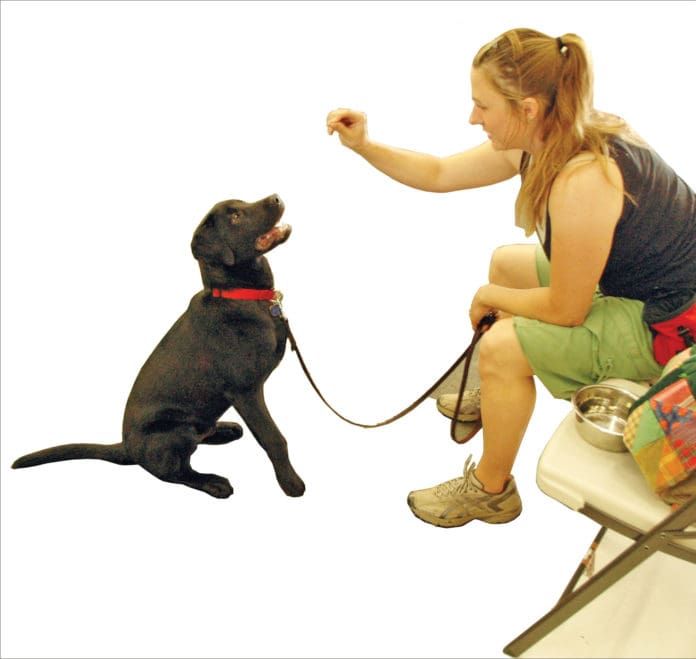It’s very frustrating when you’re sure your dog knows the cue for a behavior but he doesn’t do it when you ask him to. Imagine how frustrating it is for him when you cue a behavior and he just doesn’t understand the cue that you were so sure he knew! Here are five things to do to avoid this impasse.

1. Use the same cue, the same way, every time.
You may think you already do that, but chances are you don’t. The cue “Sit!” for example, needs to always be “Sit!” – not “Sit! Sit down! I said SIT DOWN!!!” or other variations such as “Could you please sit for mommy?”
Dogs can learn multiple cues for the same behavior, and well-trained dogs can learn to pick out and respond to cues in a sentence (a fun thing to teach, down the road!) but in early training, and if you’re having communication issues with your dog, it’s best to keep it simple.
Be consistent with the tone of your voice, too. Cue your “Sit!” in the same tone you would invite a friend to have a seat in your living room. If you chirp a quick “Sit!” one time, use a long, drawn out “Siiiiiiiiiiit” the next, and give an angry “SIT” on still another, your dog’s confusion will be entirely predictable.
2. Pair a body language cue with the verbal cue.
Dogs are natural body language communicators, so you can enhance your dog’s verbal learning if you use a body language cue (also known as a prompt). Say “Sit!” and pause for a second or two. Then raise your hand, with a treat in it, to your chest. Eventually the gesture will become a cue on its own, without a treat, and not necessarily paired with the verbal “Sit!” Practice them together and separately, so you have the flexibility of a reliable verbal or body language cue.
3. Fade lures quickly.
As soon as you can lure the behavior easily, it’s time to fade the lure so you and your dog don’t both become dependent on its presence to accomplish the behavior.
With your treat-hand behind your back, cue the behavior “Sit!” If your dog sits, click and treat. If he doesn’t, bring the treat out and give your hand-to-chest prompt or lure the sit by moving the treat over his head. Click and treat. Gradually (and variably) increase the length of time you wait after giving the verbal cue before you give the prompt. If you see his “wheels turning” – signs that he’s trying to figure out what to do – just wait a bit longer, without repeating the cue. If he sits without you having to use the lure, give him an encouraging jackpot and lots of happy praise.
4. Practice the cue!
Dogs learn through repetition, just like we do, so the more you practice, the more reliably your dog will respond to your verbal cues. Also like us, dogs can learn concepts. So a training-savvy dog will be able to put each new behavior on cue more quickly than the preceding ones when he has come to understand the concept of verbal cues.
5. Generalize your cues.
If you always practice “Sit!” in the living room, on carpeting, two feet in front of the TV, your dog might conclude that “Sit!” means “Sit in the living room, on carpeting, two feet in front of the TV.”
Practice “Sit!” in as many different locations as possible, until your dog is proficient with your verbal and body language cues (together and separately) wherever you go. Be prepared to start at Training Square One at each new location until your dog generalizes the cue.
Next, change the picture as you give the “Sit!” cue. Instead of standing in front of him making eye contact, give the cue while you are looking off to the side. Cue him to sit while you are sitting on the sofa, sitting on the floor, standing with your back to him, and hopping from one foot to the other. Give him the hand signal cue for sit while you are talking on your cell phone, and the verbal cue to sit while your hands are busy changing the baby’s diaper. When he will reliably sit on cue at least 80 percent of the time in all of these scenarios – and more – your dog really does know the cues for “Sit!”
Author Pat Miller, CBCC-KA, CPDT-KA, is WDJ’s Training Editor.






